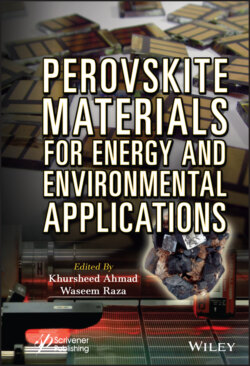Читать книгу Perovskite Materials for Energy and Environmental Applications - Группа авторов - Страница 16
Intrinsic carrier concentration
ОглавлениеThe number of electrons present in the conduction band and the number of holes present in the valance band are equal in an intrinsic (undoped) semiconductor which is in thermal equilibrium; n = p = ni, where ni is the concentration of carriers of intrinsic semiconductors.
When multiplying the corresponding sides of Equations 1.5 and 1.9 one obtains:
(1.11)
where Eg is the forbidden gap:
(1.12)
Equation 1.11 shows that for a given semiconductor and T the product of np is a constant, free of the concentrations of the dopant. It is a significant relation and is generally shown in the following form:
(1.13)
(1.14)
The equation 1.13 is called law of mass action and it is true for any semiconductor at equilibrium. The intrinsic carrier concentration in a semiconductor is dependant only on the bandgap Eg. It is a material property (at a given temperature).
When in the intrinsic material we represent the Fermi level position Ei one can obtain from equations 1.5 and 1.9:
(1.15)
From equation 1.15 we can deduce easily the position of Ei, which is given by:
(1.16)
The Fermi level Ei is nearby to the midgap; a minor alteration is due to the variance in the effective densities of conduction and valance and band.
Also using Equation 1.15 and reference energy as Ei, we have for N-type materials the alternate equations given as:
(1.17)
And for P-type materials:
(1.18)
